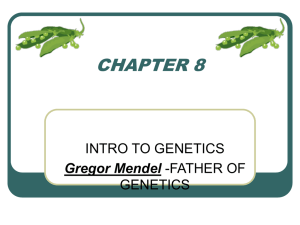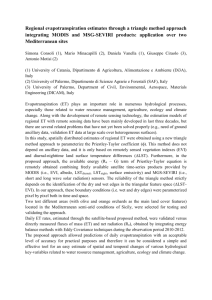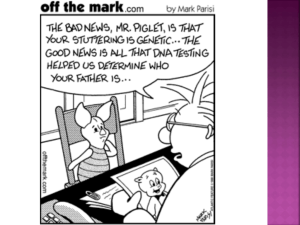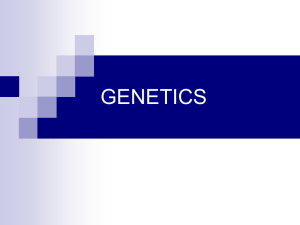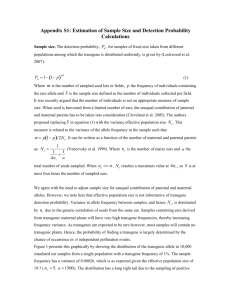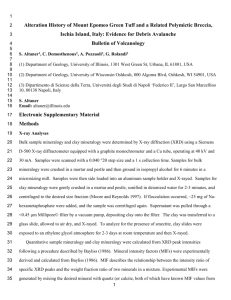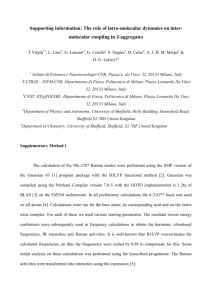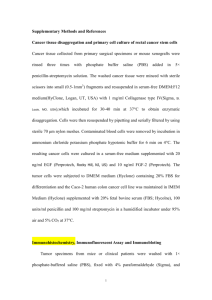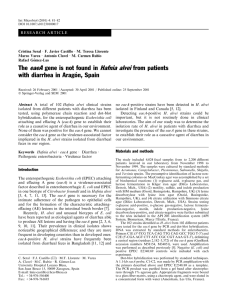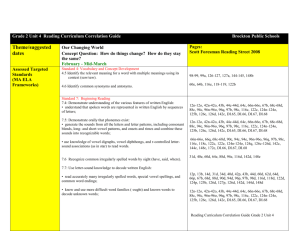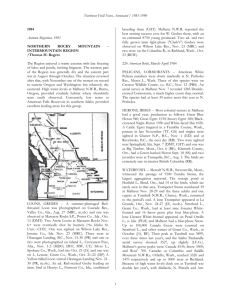SupplementalMaterial_R2.
advertisement
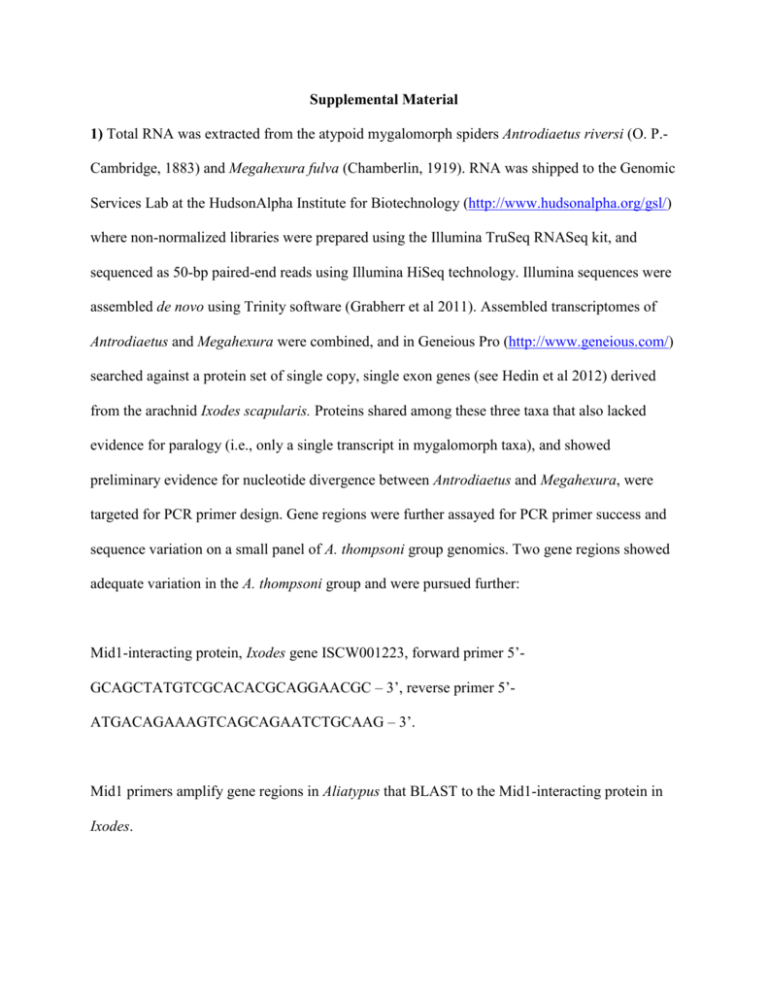
Supplemental Material 1) Total RNA was extracted from the atypoid mygalomorph spiders Antrodiaetus riversi (O. P.Cambridge, 1883) and Megahexura fulva (Chamberlin, 1919). RNA was shipped to the Genomic Services Lab at the HudsonAlpha Institute for Biotechnology (http://www.hudsonalpha.org/gsl/) where non-normalized libraries were prepared using the Illumina TruSeq RNASeq kit, and sequenced as 50-bp paired-end reads using Illumina HiSeq technology. Illumina sequences were assembled de novo using Trinity software (Grabherr et al 2011). Assembled transcriptomes of Antrodiaetus and Megahexura were combined, and in Geneious Pro (http://www.geneious.com/) searched against a protein set of single copy, single exon genes (see Hedin et al 2012) derived from the arachnid Ixodes scapularis. Proteins shared among these three taxa that also lacked evidence for paralogy (i.e., only a single transcript in mygalomorph taxa), and showed preliminary evidence for nucleotide divergence between Antrodiaetus and Megahexura, were targeted for PCR primer design. Gene regions were further assayed for PCR primer success and sequence variation on a small panel of A. thompsoni group genomics. Two gene regions showed adequate variation in the A. thompsoni group and were pursued further: Mid1-interacting protein, Ixodes gene ISCW001223, forward primer 5’GCAGCTATGTCGCACACGCAGGAACGC – 3’, reverse primer 5’ATGACAGAAAGTCAGCAGAATCTGCAAG – 3’. Mid1 primers amplify gene regions in Aliatypus that BLAST to the Mid1-interacting protein in Ixodes. Methylmalonyl coenzyme A mutase, Ixodes gene ISCW020522, forward primer 5’ATGTAGGTATGGCTGGAGTTGCTGTAG – 3’, reverse primer 5’CAGCAGCCATGGCTTCTACAGTTGTCC – 3’. MethylMal primers amplify gene regions in Aliatypus that do not in turn BLAST to the MethylMal protein in Ixodes; this gene region was however retained as an anonymous nuclear gene region for phylogenetic analysis (and is thus referred to as anonymous). Both genes were PCR amplified using PlatinumTaq from Life Technologies, using a touchdown PCR protocol as follows: 94C at 1 min, 60C at 1:15 min, 72C at 1:30 min (X10 cycles, dropping annealing temperature -0.5C per cycle); 94C at 15 sec, 55C at 1:15 min, 72C at 1:30 min (X 30 cycles). PCR products were purified on Millipore plates, and sequenced in both directions using Sanger technology at Macrogen USA (http://www.macrogenusa.net/). 2) Replicated subsampling for spedeSTEM was used for most OTUs; however, subsampling was nonrandom with alleles selected based upon genetic distance (i.e., alleles that were most distantly related within an OTU were chosen). A genetic distance matrix was estimated in PAUP*, with subsampling as follows (provinces not mentioned were not subsampled). CR – both alleles were sampled for RedHillRd (o) since it is heterozygous at EF-1γ nDNA and four alleles minimum are required for spedeSTEM. TR – sampling followed n - 1 (with n being total number of alleles) for each province, except San Gabriel (m) contained both alleles. SN – sampling followed n - 1, although Piute (c) contained both alleles. In the combined analysis (all provinces), three alleles were subsampled from each OTU, with the exception of south Coast Ranges, which contained both alleles (2). 3) Probability of observing monophyly for Frazier and Sierra was calculated using equation 6 in Roserberg (2007). Equation 6 sums the probabilities for at least that number of loci as monophyletic (for example, if you specified four out of five loci as monophyletic, you would also calculate for five out of five and sum the probabilities), but we calculated for the specific number of observations of monophyly (i.e., only for four out of five loci). For both calculations, we assumed 27 gene lineages within a locus, with equal sample sizes for all six loci. For Frazier, the probability was calculated for five alleles as monophyletic, and 22 alleles outside of that group. For Sierra, the probability was calculated for four alleles as monophyletic, with 23 alleles outside of that group. References: Grabherr MG, Haas BJ, Yassour M, Levin JZ, Thompson DA, Amit I, Adiconis X, Fan L, Raychowdhury R, Zeng Q, Chen Z, Mauceli E, Hacohen N, Gnirke A, Rhind N, di Palma F, Birren BW, Nusbaum C, Lindblad-Toh K, Friedman N, Regev A. 2011. Full-length transcriptome assembly from RNA-seq data without a reference genome. Nat Biotechnol. 15;29(7):644-52. doi: 10.1038/nbt.1883. Hedin M, J Starrett, S Akhter, AL Schönhofer and JW Shultz. 2012. Phylogenomic resolution of Paleozoic divergences in harvestmen (Arachnida, Opiliones) via analysis of next-generation transcriptome data. PLoS ONE 7(8): e42888. doi:10.1371/journal.pone.0042888 Rosenberg N.A. 2007. Statistical tests for taxonomic distinctiveness from observations of monophyly. Evolution. 61:317-323.
